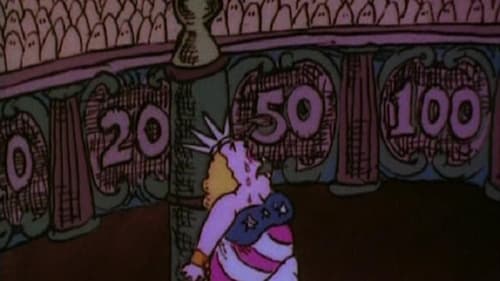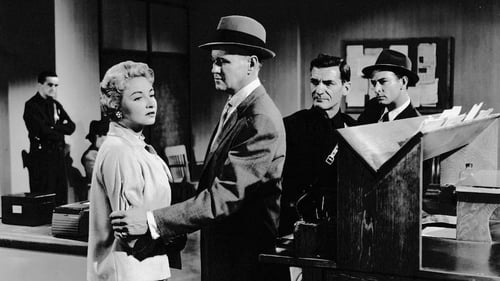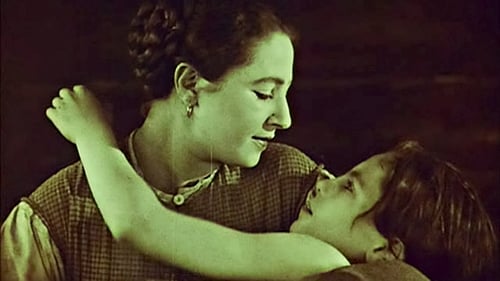Madame Le Murie (1993)
장르 : 다큐멘터리
상영시간 : 34분
연출 : Petr Václav
시놉시스
Petr Vaclav's documentary Pani Le Murie (Madam Le Murie, 1993) depicts the last survivor of an aristocratic family who refused to bow to Communism.

An ascetic walks through the narrow streets of a village every morning while his family is still asleep. In his semi-somnolent state he dreams about the history of the village mixing up myths, folklore and facts.

While listening to a tedious lecture on the Soviet threat, Wisconsin Dells’ Tuesday Club members fall asleep and find themselves laboring in an all-women collective in Russia under the unflinching eye of the Soviet special police

"In Chakra, I was able to transfer the traditional order of the chakras into a film, starting with the first (lower) chakra and working up to the seventh (top) chakra…" - Jordan Belson


A surrealist saga in four parts: 1.) The credit sequence in which title cards show successively larger foetuses pulsating on the screen until the baby is born and cries.
2.) Etoile-directly referring to Cocteau, Lethem shows an adolescent sucking a starfish and then giving birth to a smaller starfish. A statement of inadequacy. To give birth involves an emasculation and a loss of vitality.
3.) Corps-two images of a man on a couch groping for each other, watched by a mysterious peeping Tom. As the two superimposed images come together, the heavy breathing subsides…the statement that the birth of desire is a self – realisation.
4.) Hymen – The decaying body of a girl is shot through green filters, and the final image reveals her vagina crawling with maggots and overlain with a crucifix. A representation of Catholicism preventing the free expression of desire.

Uncle Sam has been living peacefully in the American southwest, running a gas station. But when terrorists kidnap the Statue of Liberty, Uncle Sam teams up with an eagle to go rescue her.

Simple objects, photographs, and events prompt Frank to self-conscious rumination. From his homes in New York and Nova Scotia and on visits to friends, the artist contemplates his relationships, the anniversary of his daughter's death, his son's mental illness, and his work.

A young boy gets caught stealing a sheep and is shaved of all his hair and branded with a mark on his forehead so that everyone will know that he is a thief and not to be trusted. Dumped in the desert, the thief covers his marking with a headscarf and goes to the nearest village where he is taken in by a trusting family in return for his work. However, has be actually changed or is he still the same thief at heart?

A formal 1861 portrait of a Chinese Mandarin and his wife is the starting point for this allegorical investigation of the fantasies spawned in the West about the East, particularly that which associates femininity with the mysterious Orient. ADYNATA presents a series of oppositions-male and female images, past and present sounds-which in and of themselves construct a minimal and fragmentary narrative, an open text of our imaginations, fears and fantasies.

Documentary film and home movie about Dwight Core, Jr., a boy with Down syndrome. The footage was originally shot throughout the 1960s and 1970s by Core's father, Dwight Core, Sr. The footage was later discovered and completed by the filmmaker's grandson, George Ingmire

A camera records the last moments in the life of a seagull on a polluted beach.

Sergey Dvortsevoy makes his international debut with this astonishingly intimate portrait of a nomadic family on the Kazakh plains. Several scenes in this slow, elegant film betray a certain dry humor -- a child devouring the last of a bowl of yogurt and then crying; a cow getting its head stuck in a pail; and a woman singing to herself, accompanied by her snoring husband. Other scenes capture the nomads' hardscrabble lives -- drunken herdsmen in the grips of existential despair, growling dogs, and a camel enduring a rather grim septum piercing. By the end of the film, the family pulls up stakes and herds its sundry four-legged beasts -- camels, cattle, goats, dogs, and horses -- to a more fertile plain. This film was screened at the 1999 Yamagata International Documentary Film Festival.

A police detective finds himself entangled in the web of the underworld when he falls in love with a nightclub singer accused of murdering a crooked lawyer.

A surrealistic montage set in motion by a tidal wave and incorporating a samurai battle.

A series of ghost-like vehicles drive by in this short film by Hollis Frampton.

아내를 잃은 피에르는 얼마 후에 홀로 딸을 키우는 잔느와 재혼한다. 그러나 여전히 엄마를 그리워하는 아들 장은 엄마의 자리를 빼앗으려는 잔느를 적대한다. 어느 날, 잔느가 엄마의 옷으로 잔느의 딸과 여동생의 옷을 만들어주려 하자 장은 분노에 휩싸여 옷을 갈기갈기 찢어버린다. 무성영화시대의 리얼리즘 영화를 대표하는 작품. 프랑스의 시적 리얼리즘을 확립한 자크 페데는 스위스 현지의 자연 풍광을 배경으로 인물들의 심리와 정서를 솔직하면서도 날카롭게 그려냈다.

Familiar objects are transformed into a candy-coated vision of war in this seminal stop-motion short by PES.

Julius goes rabbit hunting while Alice goes bear hunting. Alice and her cat learn at their own expense that one shouldn't bother animals, whether those be rabbits or bears.

“False Aging expresses a sense of lost time, of not moving in step with the rest of the world. In one sequence Jefferson Airplane's Lather asks the question, ‘Is it true I'm no longer young?’ Time makes us prisoners locked in ourselves, like the a small yellow bird who slips behind the back of a playing card, then comes back out in front of it. In rapid alternation, they make a kind of thaumatrope, that spinning parlor trick that suggests a sense of movement in the flapping wings of a caged bird. Here the birdcage has been replaced by chance, underscoring the momentary illusion that the bird is free." - Genevieve Yue

The gang goes to a circus sideshow to visit Dickie and Spanky's uncle, mistakenly believing he is "The Wild Man from Borneo."





